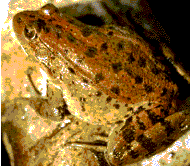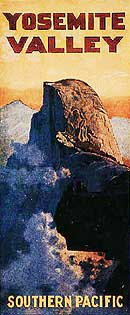| |

Front
Page
Activities
Administration
The
Ahwahnee
Artist
Palettes
Human History
EcoImpact
Indian
Legends
Natural
History
Master
Plan
Media & Bookstore
Museum
The
Naturalist
Park & Local
Cams
Pioneer
Cemetery
Road
Conditions
Search
Site
Reader's
Mail
Vistas & Views
Weather
Conditions
Yosemite
Guide
Advertise With Us
Masthead

Top
Stories
Yosemite Park
National Parks
Conservation
Sierra Nevada
Sierra Club
Forestry
Park Service

Bulldog News
California Star
Clovis Free Press
Daily Republican
Fresno Republican
Mother Wired
Reagan Library
SierraPortal.com
Tower District News
ValleyPress.com
WebPortal.com

Yosemite Bookstore
Ahwahnee
Hotel
Auto House of Clovis
Aluisi
Real Estate
Cerro Negro Music
Clovis Planetarium
Irene's Cafe Dining
Your Fresno Broker
FresnoIncomeProperties
Fresno Investment
RE
Majestic Pawn
Onomuse Productions
PC Paramedics
Presentations
Inc.
Roger
Rocka's
The 2nd Space
Tower 2000 Jukebox
Conserve Wetlands
|
|
 |
|
[an error occurred while processing this directive]

March 1, 1996
Yosemite's Silent Spring
By Howard Hobbs Ph.D., the Daily Republican Newspaper
 YOSEMITE
VALLEY - This past year the wilderness in and around Yosemite
National Park was strangely silent. Gone are the croaking songs
of frogs and toads. The loss of Yosemite Toad and frog species
appears to be the first documented large-scale collapse of an
entire community of frog species. YOSEMITE
VALLEY - This past year the wilderness in and around Yosemite
National Park was strangely silent. Gone are the croaking songs
of frogs and toads. The loss of Yosemite Toad and frog species
appears to be the first documented large-scale collapse of an
entire community of frog species.
The National Park Service has called
in biologists to study the phenomenon. Park Service biologists
have found that all seven native species of frogs and toads in
the Yosemite region have declined since early in the century.
Three of the species have totally disappeared from Yosemite.
Park Service biologists have compared
their findings with a 1915 study of frog and toad species in Yosemite
National Park. The found that 80 years ago, the wilderness in
and around Yosemite National Park was rife with the trilling,
croaking songs of frogs and toads. This is no longer the case,
according to the new study.
By comparing a recent survey of
frog and toad species with one done in 1915, researchers were
able to provide long-term data needed. For while many researchers
are documenting declines of frogs and toads around the world,
most focus on one or a few species with data spanning 20 years
at best, leaving some to question whether the drops in numbers
seen are simply harmless, short-term fluctuations.
National Park Service zoologists
say the new study, published in the current issue of the Journal
Conservation Biology, provides some of the best evidence that
the declines are a long-term problem. "I was really very impressed
by the [Yosemite]study," said Dr. Martha Crump, a behavioral ecologist
at Northern Arizona University in Flagstaff, suggesting that the
new paper would convince the last remaining skeptics. "It's such
a large fauna declining over such a large area. That's what makes
this a really important study." The Smithsonian's amphibian expert
Dr. Ronald Heyer, said: "It's kind of chilling in its effect.
Here we have what we consider to be a relatively protected place,
and amphibian declines are occurring even there."
In the 1915 study, by Dr. Joseph
Grinnell and Dr. Tracy Storer, a team of eight scientists surveyed
numerous animals, including the frogs and toads, at sites along
a 90 mile line passing through Yosemite National Park. In addition
to having that team's published survey, Drost and Fellers were
able locate the original researchers' field manual notations and
photos, enabling them to revisit those original field sites and
sample the amphibian population that might still be present.
In the current study, the research
was directed to the status of Yosemite frogs and toads. Drost
and Fellers listened for amphibian songs, waded into pools and
used nets to gather tadpoles for identification in the field,
and counted the numbers of adult amphibians present. They also
searched new sites to document more thoroughly the abundances
of species in the area.
Despite their efforts, the two consistently
turned up far fewer frogs and toads than did their predecessors.
Three species, the red-legged frog, the foothill yellow-legged
frog and the great basin spadefoot, were not found at any of the
original or new sites searched.
In 1915, the Western Toad was described
as "exceedingly abundant" at six sites, but researchers found
only a single live adult and a small group of tadpoles at just
one of the original survey sites. The mountain yellow-legged frog,
described in 1915 as the most abundant amphibian at high elevations,
had nearly disappeared; the researchers found only a single adult
and a single tadpole in their survey of the 14 original sites.
The Yosemite toad had declined or disappeared at 9 of the 13 original
sites. Even the Pacific treefrog, a species that is doing well
in many other parts of its range, had declined at nearly all of
its high-elevation sites.
The only species that was doing
better now was the one non-native species, the bullfrog, which
was introduced to the San Francisco Bay area in the late 1800's
from the eastern and central part of the country.
The declines occurred not only across
a wide range of species and in a large area but over a wide variety
of habitats. Woodlands, alpine tundra and high desert are included
in the study transect, a series of scattered sites running from
Snelling, Calif., in the foothills, then east into the Sierra
Nevada in Yosemite National Park and onward to Mono Lake.
The National Biological Service
zoologist, Stephen Corn, speaking from Fort Collins said researchers
in other national parks were also finding decreases in the numbers
of frogs and toads, though none so drastic or widespread. Corn
said. "I think the National Park Service needs to be pretty concerned
that things like this are happening." He said similar surveys
had been recently finished or were ongoing in Rocky Mountain,
Yellowstone, Grand Teton, Glacier, Mount Rainier and Olympic National
Parks.
Researchers have ruled out habitat
destruction as a cause of the disappearance. "You can't find a
place on earth that's entirely pristine," Drost said, "but by
and large, this is about as pristine an area as you can find in
the lower 48 United States." Drost said the field sites still
look essentially as they did in the 1915 photos.
Researchers have ruled out drought
as a cause of the drastically lower numbers of frogs and toads.
They said acid rain was also unlikely to be a primary cause as
acidification does not appear to have played a role in population
declines in other studies in the Sierra Nevada.
[Editor's Note: An updated
bibliogrpahy for this article is available without charge
from the publisher.]
© Copyright 1996-2001 By The Daily Republican
Newspaper. All rights reserved.
Letter
to the Editor

|

[an error occurred while processing this directive]

|
|
 |
|
| Nature Notes |
"Climb
the mountains and get their good tidings. Nature's peace will flow
into you as sunshine flows into trees. The winds will blow their own
freshness into you, and the storms their energy, while cares will
drop off like autumn leaves."
-- John Muir, 1901 |

|
|







